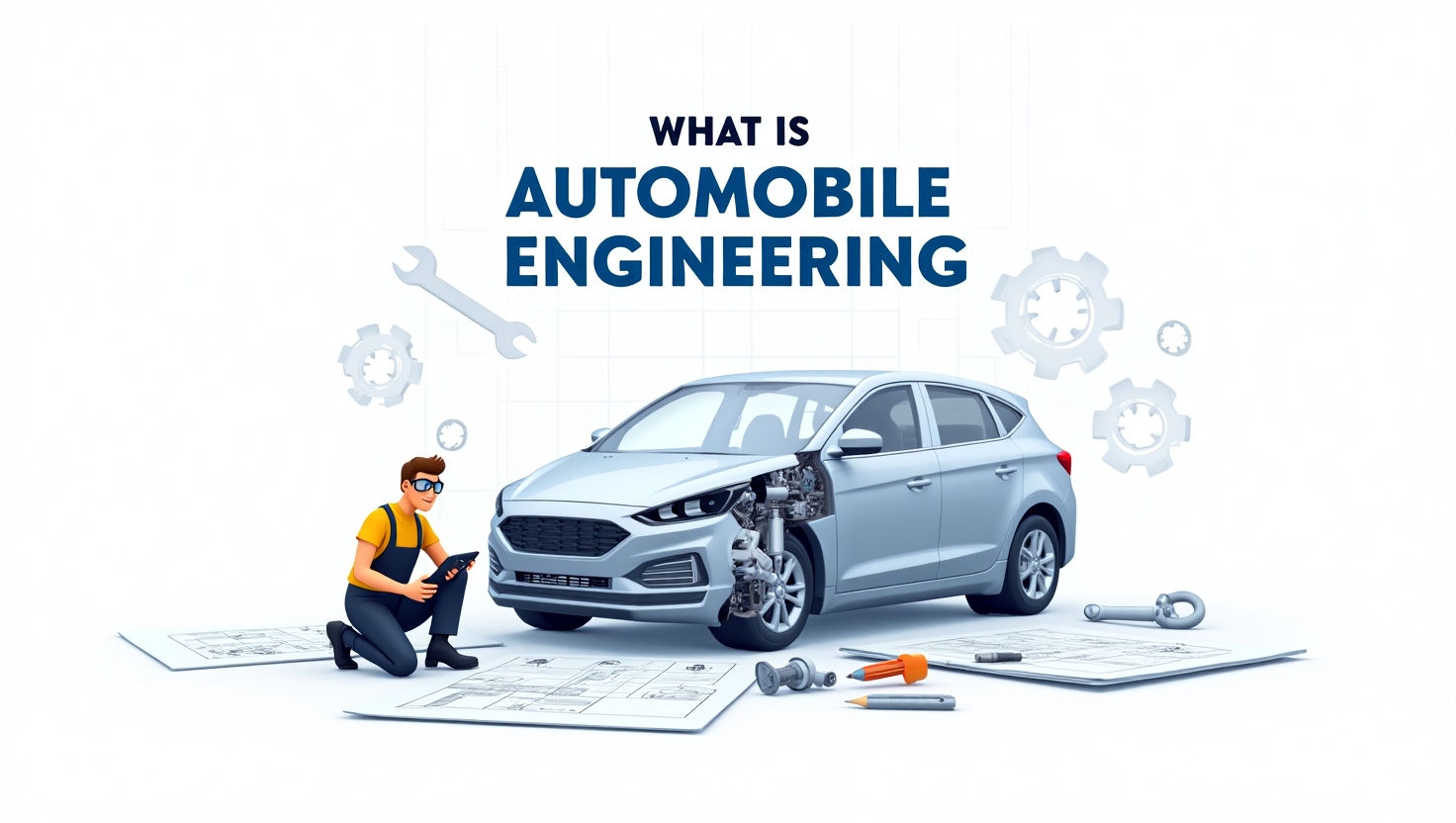Physical Address
304 North Cardinal St.
Dorchester Center, MA 02124
Physical Address
304 North Cardinal St.
Dorchester Center, MA 02124

Automobile engineering is a branch of engineering that focuses on designing, manufacturing, and maintaining vehicles such as cars, trucks, motorcycles, and buses. It combines principles from mechanical, electrical, electronics, software, and safety engineering to improve the performance, efficiency, and safety of automobiles.
This field plays a vital role in technological advancements, including electric vehicles (EVs), self-driving cars, and fuel-efficient engines. With the rapid growth of the automotive industry, automobile engineering continues to evolve, making transportation faster, safer, and more environmentally friendly.
Automobile engineers work on designing the structure, aerodynamics, and aesthetics of vehicles. They focus on:
Manufacturing involves precision engineering, automation, and assembly lines, where robotic systems play a crucial role in producing vehicles efficiently.
The engine is the heart of any vehicle, and automobile engineers work on making engines more powerful, fuel-efficient, and environmentally friendly. Key areas include:
Advancements in engine technology focus on reducing fuel consumption, lowering emissions, and improving power output.
The transmission system transfers power from the engine to the wheels. Engineers design different types of transmissions, including:
Efforts are made to enhance efficiency and reduce power loss in transmission systems.
Modern automobiles come equipped with advanced safety systems that rely on engineering and artificial intelligence (AI). These include:
Safety regulations and crash testing ensure vehicles meet global standards for occupant protection.
The automotive industry is shifting towards:
These advancements are shaping the future of transportation.
Automobile engineering is a dynamic and evolving field that plays a crucial role in transportation. Engineers continuously work on innovations that make vehicles safer, more efficient, and environmentally friendly. As technology advances, the future of automobile engineering will be dominated by electric, autonomous, and AI-driven vehicles, ensuring a smarter and more sustainable world.